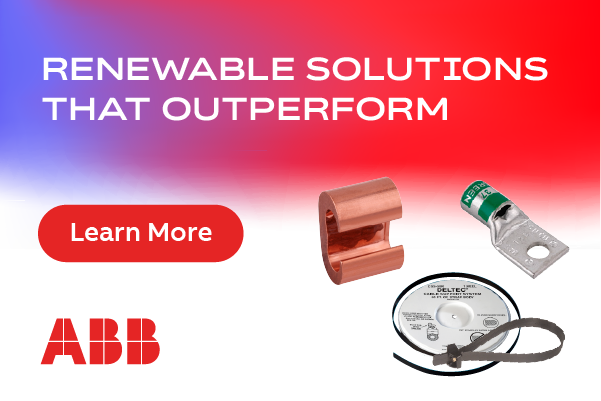Using New Technology to Reach Our Electrified, Carbon-Neutral Future
With the Biden administration set to decarbonize the United States' energy sector by 2030, the country is in a pivotal moment. Electrification and renewable energy address the top two emissions culprits simultaneously: electricity production accounted for 25 percent of US emissions in 2019, and 29 percent was due to transportation.
A clear pathway to 2030 involves coupling these sectors while decarbonizing the grid with increasing renewable generation. However, we can't do this without integrating the latest digital technology. Advances in data and automation, microgrids, and battery energy storage systems (BESS), are a few examples of technology that bring once lofty goals of carbon neutrality within reach.
.jpg)
(photo courtesy 3NE)
During a recent roundtable on carbon neutrality, it was clear that these digital grid technologies combine to create the resilient and flexible infrastructure needed to reach and maintain an electrified future. One great example of this is Snohomish County Public Utility District (SnoPUD), a public utility in Washington state. SnoPUD was able to leverage data and automation, create a renewable microgrid with a BESS, and add two-way vehicle-to-grid (V2G) electric vehicle (EV) chargers. This is an ideal model of how utilities will use technology to enable North American power grids to deliver impressive carbon neutrality goals.
Data and automation
Industries increasingly rely on data to improve operations and performance - the energy industry is no different. The electric grid has been called the largest machine on earth, connecting billions of people together. Achieving carbon neutrality on this scale will require the greatest data play in our history.
From advanced metering infrastructure (AMI) meters that capture power flows throughout the grid, to sensors that track EVs' power usage, data flows in from a multitude of different sources. It is important to leverage this data to perform functions such as maintenance scheduling, asset management and risk management under a single platform, so that it can be utilized across the entire organization - not just by the silos within the organization. By connecting, managing, and using these data efficiently and strategically, utilities can maximize their assets' performance and improve their reliability and efficiency, and provide the energy backbone for customers and suppliers to do the same.
Out of this sea of data, it can be a challenge to identify actionable pieces of information. While it can be helpful early on to enlist people with the institutional knowledge to separate valuable data from what can be let go, another important initial step is understanding the problem so it can be approached with better access to data and intelligence. For instance, with a robust data solution, utilities can determine how long batteries could support a solar-powered grid when the weather is overcast and use that information to prepare their operations. SnoPUD uses data solutions like this to ensure its microgrid can keep its data center running on its solar arrays in the event of an earthquake.

Another example is using data to identify underperforming transmission and distribution assets (those losing a larger than expected amount of energy or needing maintenance), ultimately extending the life of those assets. Used to solve issues like these, data provides a basis for utilities to save energy, maintain infrastructure, and operate optimally without having to rely on reserve or back-up power sources.
Yet, the true power of data in creating our green future arrives when paired with automation. Automation mobilizes and orchestrates operations. For instance, when air conditioners work overtime during a heat wave, smart forecasting can be used to charge up batteries in advance of the needs, and then real-time data can alert these batteries to discharge to meet the additional power draw. Instead of having to rely on less efficient power plants to meet the peak demand, utilities' data and automation systems can activate battery storage systems.
Extending these concepts, automated systems can collect, combine, analyze, and act on data from disparate sources - better connecting asset needs to the teams that manage them. Properly calibrated automated systems can help reduce outage time and streamline the processes and energy flows of a utility. This improves energy efficiency and saves costs, whether across an organization or across the entire power grid.
 Microgrids and battery energy storage systems
Microgrids and battery energy storage systems
Ensuring that the variable generation of renewables can best meet the dynamic power needs of utility customers is a central part of our carbon-neutral future. BESS and microgrids are essential to flattening out the peaks and valleys of renewable generation, mitigating the impacts of natural disasters and other extreme events on our grid, and optimizing the distribution of resilient power.
The maturity of use cases for microgrids in remote locations allows us to see how densely populated areas have started to incorporate the technology into their own power grids. It is in the midst of this technology adaptation that SnoPUD commissioned its microgrid.
What SnoPUD learns today - from design to control to communications challenges - will make it easier for other utilities to leverage microgrids and BESS to reach our carbon-neutral goals. This is a major step toward building a power grid that's ready for EVs and the electrification of everything.
Electrification of everything
The future is electric. After a history of reliance on fossil fuels, industries are on a viable path for a carbon-neutral future.
Currently, the grid isn't set up to maximize the carbon emissions saving opportunities for EVs, especially for night charging. To align this new demand with renewable sources, utilities will need to create robust data and automation systems to support increasing BESS and microgrids - leveraging data to see how far a particular vehicle travels and automatically filling up the battery to what's needed (avoiding an unnecessary full charge). Microgrids like SnoPUD's could eventually use the batteries within the EVs as an extension of the BESS system through V2G EV chargers. With smart and interconnected data and automation, the grid could also borrow electricity from parked vehicles during peak hours and return it when the vehicle is scheduled to move.
The technologies for decarbonization are interconnected; to reach a carbon-neutral future, we will need all of them. We can get the greatest benefit, and reach our goals more quickly, if we adopt and coordinate all these pieces together. Microgrids, BESS, data, and automation show how digitalization of the power sector is a key requirement for meeting US goals.
Leah Kaffine is a Principal Technical Consultant at Hitachi ABB Power Grids with over 10 years of gas and power industry experience. She currently focuses on developing better grid models and forecasts for more renewable electricity generators.
John Glassmire is a Senior Advisor of Grid Edge Solutions at Hitachi ABB Power Grids. He has extensive experience in the modeling and design of both distributed and traditional energy supply systems.
Hitachi ABB Power Grids | www.hitachiabb-powergrids.com
Author: Leah Kaffine and John Glassmire
Volume: 2021 July/August









